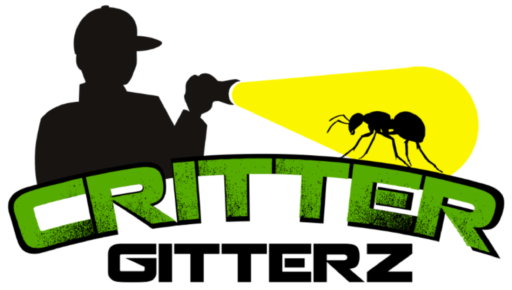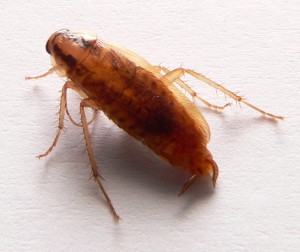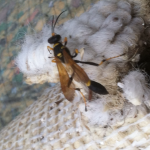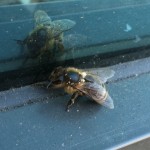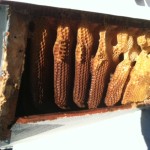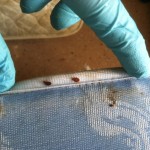Cockroaches – Critter Gitterz, Inc
Cockroaches
The German cockroach (Blattella Germanica) is Colorado’s most common cockroach, but even though their population is great it may be difficult to spot these critters due to their quick movement and small size (about 1/2in in length). If your looking for them at night they might be found munching on fallen crumbs and garbage inside office buildings, theaters, restaurants, and even private residence. This is especially true during the winter when the Colorado cold is too much for these critters to handle.
If you are unlucky enough to stumble upon one it’s likely that it will become excited or frightened and release an odorous compound in defense. It is no wonder cockroaches have been looked upon as pests for centuries.
Cockroaches are small, produce many offspring within a lifespan of 6-9 months, and can mature within 6 weeks after hatching. It’s easy to see how they have adapted to become very durable and resistant to many chemicals used in the pest control industry. This is why it is important for our Critter Gitter technicians to have the latest supply of eco-friendly cockroach fighting technology within their arsenal, and the knowledge to be able to use it safely and effectively.
If your having trouble keeping these pests under control, give us a call.
Stinging Insects - Critter Gitterz, Inc
Stinging Insects
Stinging Insects - Critter Gitterz, Inc
Wasps/ Hornets/ Yellow Jackets
Wasps are flying insects with hard exoskeletons and stingers. They are commonly confused with bees, but lack the hairy body and are more vibrantly colored.
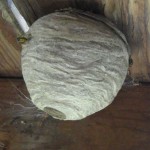 Wasps mainly eat live insects, but some types have been known to scavenge on dead insects, or garbage, and rarely eat nectar. They can be a very serious nuisance in Colorado, particularly in the late summer when yellow jackets tend to forage near trash cans also, in outdoor eating areas. Where a lot of people gather and when their nests may house up to 200 wasps.
Wasps mainly eat live insects, but some types have been known to scavenge on dead insects, or garbage, and rarely eat nectar. They can be a very serious nuisance in Colorado, particularly in the late summer when yellow jackets tend to forage near trash cans also, in outdoor eating areas. Where a lot of people gather and when their nests may house up to 200 wasps.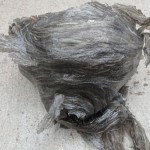
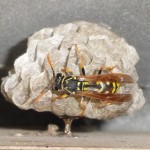 Western yellow jackets are responsible for most of the so called bee stings in Colorado. Wasps, including Yellow jackets, western yellow jackets, hornets, paper wasps, western paper wasps, and a new species to Colorado, the European paper wasp.
Western yellow jackets are responsible for most of the so called bee stings in Colorado. Wasps, including Yellow jackets, western yellow jackets, hornets, paper wasps, western paper wasps, and a new species to Colorado, the European paper wasp.
They make their nests out of paper, sometimes mud, in small cavities in the sides of buildings, in trees, shrubs, under building eaves, underground using existing hollows, and occasionally nests can be found in dark, enclosed areas of buildings. Such as crawl spaces or wall voids. Most stings that occur come from Yellow Jackets, but the others will not hesitate to defend their home if they feel threatened. A sting from the Yellow Jacket can cause a staff infection and should be treated by a professional right away.
Western or European Honey Bees (Apis mellifera)
Honeybees are commonly found collecting nectar and pollinating between our vast variety of native and introduced flowers.
These eusocial hymenoptera serve an important role in our ecosystem however, when they make their homes in our homes things get sticky. An average person, one without allergic reaction or reduced immune system, can withstand up to 10 bee stings per pound of body weight and an average hive contains between 40,000 and 80,000 individuals on average. That means that a small child or pet could be in danger around only .0025%-.005% of the total hive population in which all individuals are able and willing to defend the hive if threatened.
Without proper training bee extermination and hive removal can easily result in serious injury and death. This is why our technicians are well trained in the extermination and or live management of these hives. A mere extermination of the colony may not be sufficient action for the management of these pests, due to their importance in maintaining the structure of the hive.
Without the workers, the hive quickly melts (especially in the hot summers of Colorado) and will create a large sticky mess of wax and honey. This is why we strive to quickly and safely relocate entire hives to a more acceptable home.
For more information about bee hive removal and relocation contact us via phone or email.
Flies - Critter Gitterz, Inc
Flies
FLIES
Several species of flies enter homes in Colorado. Most are mere nuisance problems, such as cluster flies and face flies, which are found during fall and winter. They use homes for shelter from the cold but do not reproduce at this time. Blow flies and house flies are found in the home during summer. These flies develop in trash, manure or other animal materials. The best way to control fly problems in a home is to exclude them by screening. Insecticides can also supplement other controls for some flies.
Most flies are simply nuisance pests, but others can transmit diseases. House flies, face flies and blow flies develop in manure, carrion, and garbage and are commonly contaminated with disease-causing bacteria, including those associated with food poisoning.
There are also several flies found in Colorado that do bite people. These include black flies, biting midges and deer flies. Mosquitoes are the most well known of the biting flies, but several other species can be found locally and are a nuisance that can cause public health problems. While all biting flies are blood feeders, none, aside from mosquitoes, are known to transmit human diseases in Colorado. Some flies, however, can transmit animal diseases. Lastly, bites can be painful or produce swelling and intense itching as the result of injected saliva.
Spraying, fogging, baiting and trapping are very effective in controling these flies. Having Critter Gitterz out each month durring the spring, summer and fall months will reduce the number of flies and keep them out of your house.
Bed bugs - Critter Gitterz, Inc
Bed bugs
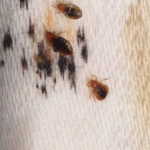 Cimicidae also known as Bed Bugs
Cimicidae also known as Bed Bugs
Bed bugs are critters of nightmares, and for good reason. These little parasitic insects can commonly be found living within your bed, feeding off your blood supply when you fall asleep at night. They are very tiny, about 4-5mm in length, thus very hard to identify however, symptoms from these little critters may be easy to detect.
Diseases have not been known to be transmissible through these guys, but if you are a victim of these parasites you may develop blotchy rashes around major blood vessels including the frontal neck, inner thigh, inner arm, etc. Individual bed bugs feast every 5-10 days during the summer and much less often during the winter but with a colony size ranging from hundreds to thousands it may feel much more often.
In order to eradicate these critters it’s imperative that both parties work together efficiently. The customer’s job is to prepare the infected areas before the company is able to perform an extensive treatment, for this it is important that there is good communication and cooperation. Critter Gitter technicians are highly trained to deliver a full bed bug treatment as well as friendly enough to want to talk to. So if you want us to get these critters out of your home, let us know today so you can have a good night because we don’t let the bed bugs bite
